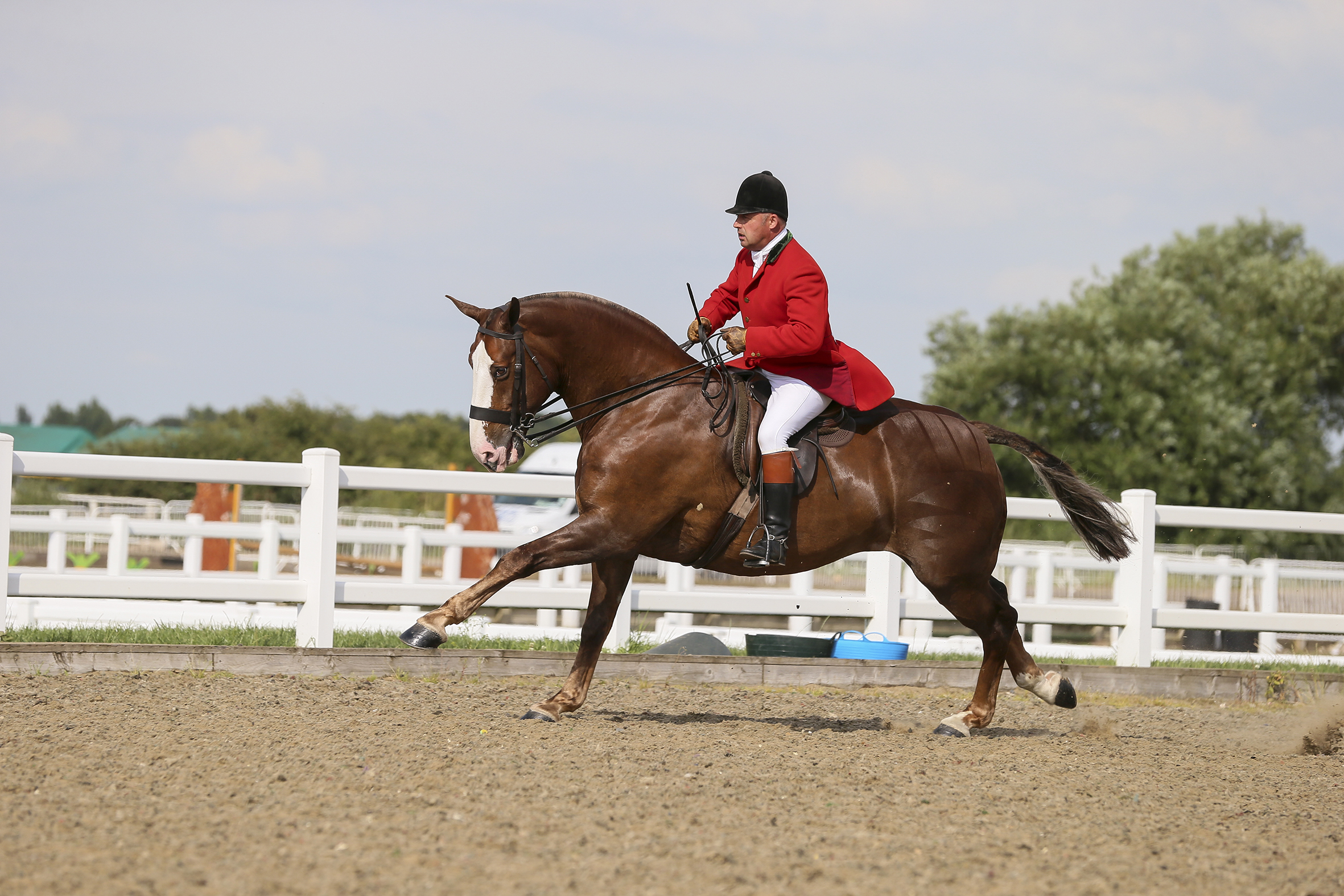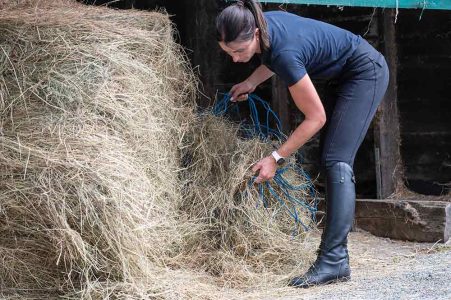If you’re a fan of showing, you may have always wondered how the top riders perform so well in the show ring. Top showing rider and producer Natalie Reynolds shares her top 10 tips on perfecting the gallop.
Perfecting the Gallop with Simon Reynolds
Well-known for his huge success in the world of showing, Simon is a force to be reckoned with in the showing world, with various showing championships to his name – especially when it comes to cob and show hunter classes.
Simon’s partnership with the maxi cob Hallmark lX has led to countless accolades while other multi-winning partnerships include the lightweight cob Cock Robin, small hunter Sporting Sam, working hunter Ballin County, heavyweight cob Morrow’s Marksman and maxi cob Cobswallop. Read his top tips for a great gallop to help achieve success in the show ring this summer.
1. Make sure your horse is fit
If you are going to be showing in a big grass ring such as one of the Hickstead rings, The Great Yorkshire, or a big county show, your horse must be fit enough. You need to have enough stamina to complete a lengthy ‘go-round’ with a gallop and potentially a judge’s ride. You still want your horse to have enough sparkle and engine to impress and to avoid injury.
2. Practice fluent transitions
The judges want to see a keen horse but not a rude or unruly horse that is anticipating or misbehaving. It should look fluent and effortless. The transition from the canter to gallop should be smooth and not forced. I like to start asking my horse to move up slightly in the canter on the corner before the straight you’ll be extending on. I like to set the horse up before the judge is watching so it looks neat and easy.
3. Don’t flap!
I hate to see riders going far too slowly in the canter and then kicking and flapping in front of the judge. Quite often, horses that are ‘shocked’ into this type of transition will shoot, buck, or throw their head back and generally look untidy, messy and flustered.
4. It’s not a race
What people tend to misinterpret with the gallop, is that it is not about how fast your horse can go. It is not a race. The judge is looking for your horse to take a bigger stride and to lower and lengthen across the ground. The acceleration and pulling up from the gallop should be controlled and smooth. You should also keep your horse straight and not drift across the ring.
5. Keep in the saddle
I always tell people to stay in the saddle in a secure seat when extending. It’s not only neater, but also safer if your horse does have a spook or a buck. Also your seat and legs are more effective for keeping the horse straight and on the track. You should give sufficiently with your hands so the horse can stretch out the neck and lower unhindered. You can lean forward slightly with the movement of the horse so you aren’t left behind.
6. Practice, practice, practice
The only way to perfect the gallop is to practice. Practice while riding out in a group. Sometimes let your horse lead and other times teach him manners to wait behind another horse. I do believe that horses need a good ‘blow out’ every now and again. It prevents over-exuberance and also staleness from over schooling in a manege.
7. Stay calm
Often people will say, ‘my horse anticipates the gallop’. Although some horses do get ring-crafty, a lot of the time it is the jockey who anticipates and starts grabbing or fiddling when they know the gallop is coming up. If you stay calm, the horse will follow suit. Just remember, you are schooling your horse for a judge to ride sometimes, so if your horse gets keen in the gallop, don’t overdo it on the go-round.
8. Preparation is key
People often say to me, ‘my horse swaps legs in the gallop’. Again, it’s all about preparation in the corner before you set off. The horse has to be balanced and prepared to stride out and lengthen. I commonly see people having their horse far too steady and collected, before suddenly shooting them out of their hands in a frenzy, which causes the horse to become unbalanced and swap legs. If you give the horse time to prepare, he will know which direction he is going and it will be a natural and smooth progression.
9. Keep your balance
Often swapping legs can be a rider imbalance. Make sure you are sat centered in the saddle and looking straight between the horse’s ears, not hanging down one side. If you are sat crooked, this unbalances the horse.
10. Ride to the ground conditions
Always remember to ride appropriately depending to the ground conditions. I often use back studs to aid grip when appropriate, as horses will not feel comfortable if they are slipping or the ground is very hard.
All the horses at Team Reynolds are fed on Fibre-Beet to help maintain good condition throughout while training and during the busy showing season. A Super Fibre conditioning feed, Fibre-Beet is a formulated blend containing all the benefits of the original Speedi-Beet product, with added high quality Alfalfa for optimum condition and to provide quality protein for muscle tone and function.
Alfalfa can help with topline and that extra finishing touch for competition horses, or simply in maintaining weight and a healthy, shiny coat.
Unlike some cereal-based feeds, Fibre-Beet offers an excellent source of highly digestible fibre in a soaked form and provides slow release energy without the ‘fizz’.
Keep up to date with Team Reynolds Showing throughout the season on our Facebook page.






